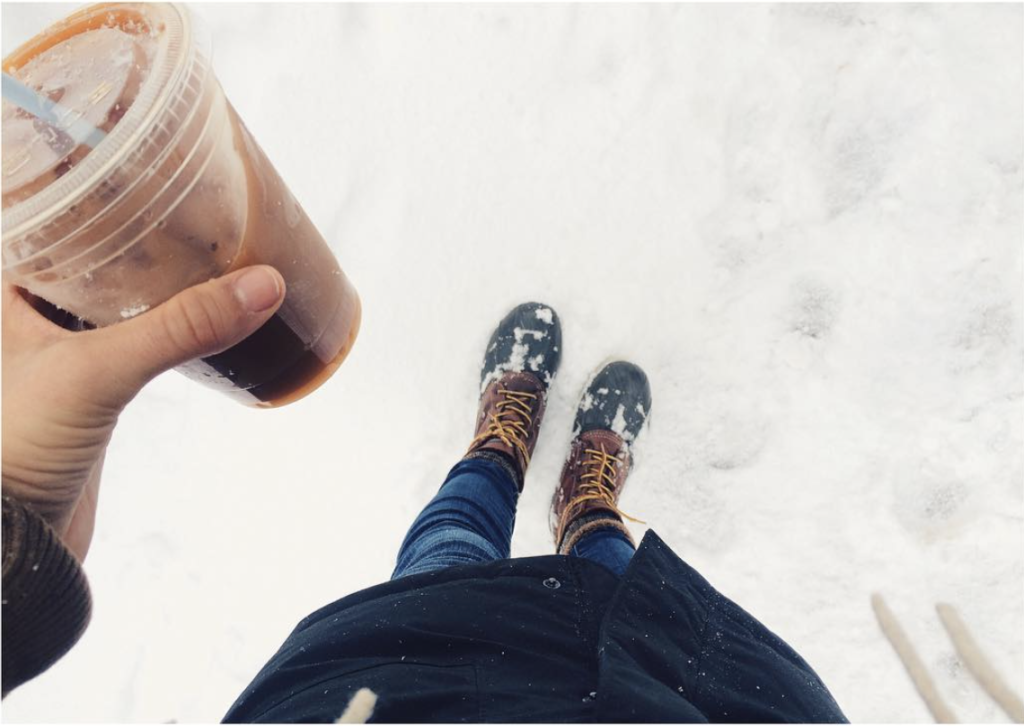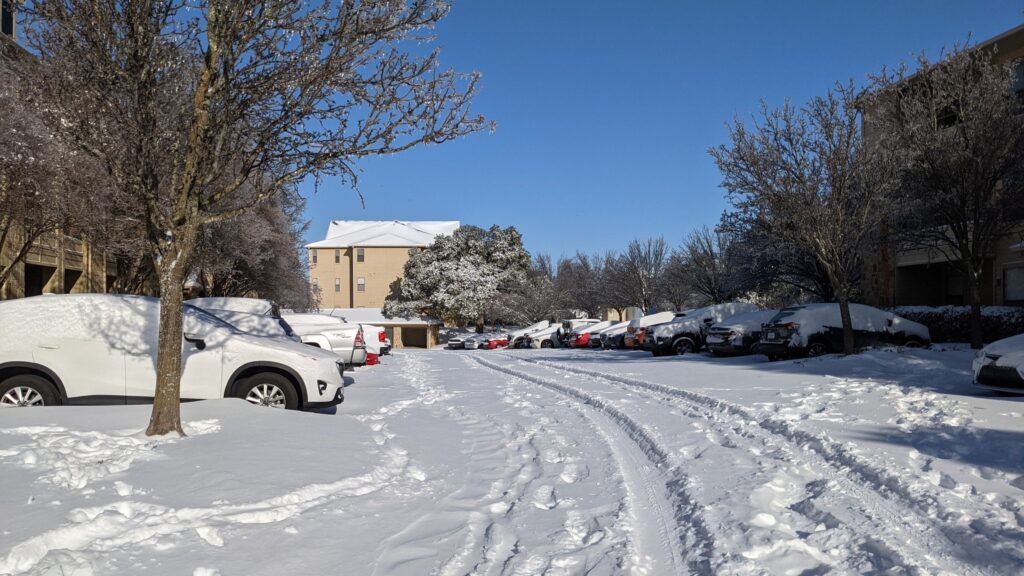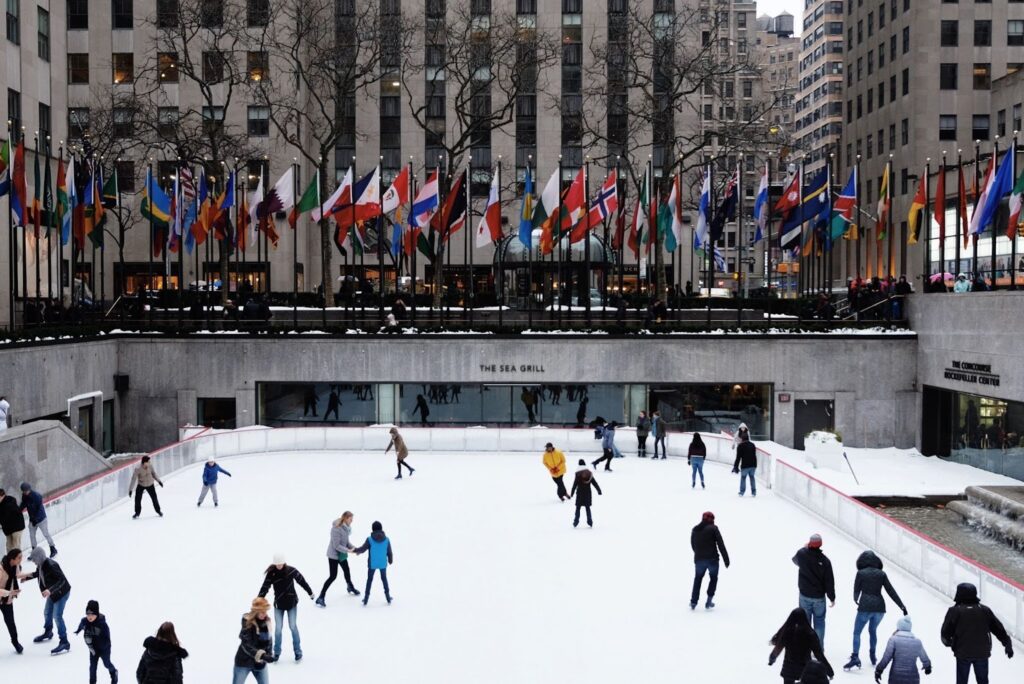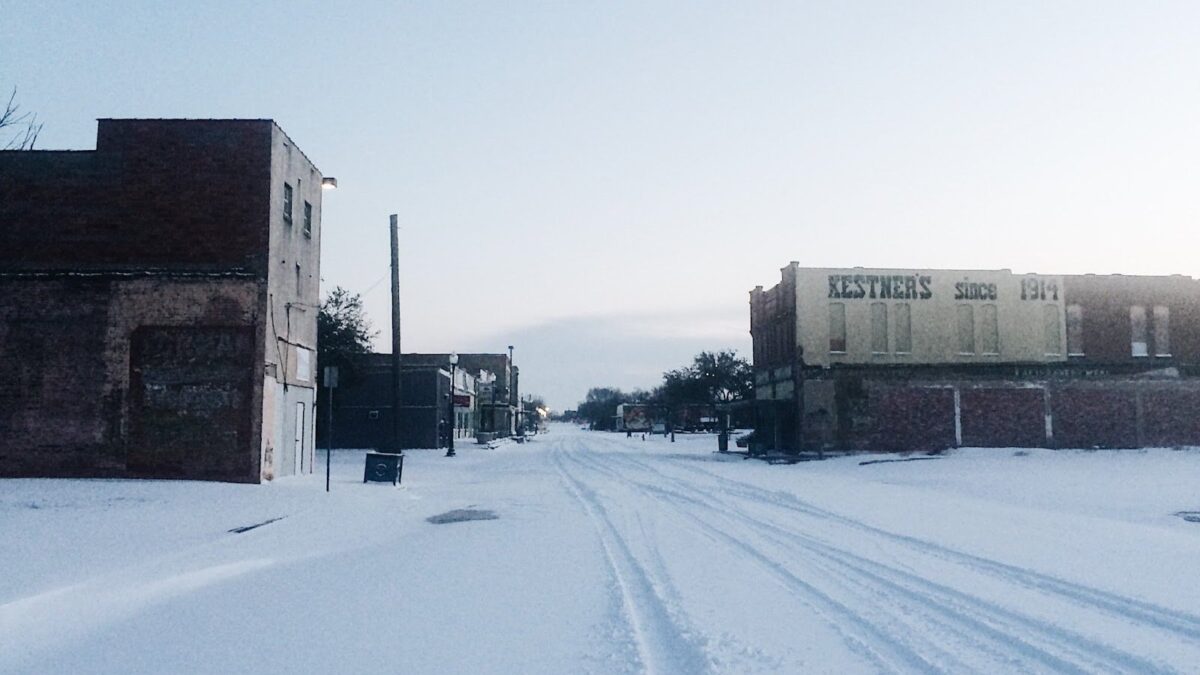This article originally ran for Strong Towns.
Nearly a year ago, just after moving to Waco, Texas, I found myself huddled on the couch with my roommate, wearing every possible layer I could and jumping up every few minutes to do jumping jacks and burpees. Once in a while, I’d peek outside the window and gaze in silent awe at the empty, quiet streets.
The city had been stunned into frigid silence by a freakishly cold and harsh blizzard. Dubbed “snowpocalypse,” the experience revealed to Texans the fragility of our energy supply and the frightening implications of cities designed around cars. Recent events in Virginia earlier this month are leading to similar conclusions.
As a transplant to Texas from Brooklyn, the experience served as an interesting contrast to my six years of urban living. In New York City, blizzards functioned as speed bumps, slowing us down for a few hours, but never bringing ordinary life to a complete and screeching halt. Rather, urban snowfalls transformed ordinary life into something new, adventurous, and beautiful.
Countless times I used blizzards as an excuse to cook an extra complicated recipe and curl up with a good movie. Once the snow had fallen, I’d bundle up in my chic layers and either carry on with errands and work as normal (just at a slower and slushier pace) or I might set out to celebrate the snow. It became a joyful excuse to meet up with a friend for coffee, amble aimlessly through the West Village with my camera, or journey up to North Manhattan for a silent walk at the Cloisters before lunch at Maxx Café in Morningside Heights.
Last year’s Snowpocalypse was not my first suburban winter. In 2014, I braved several blizzards without a car while researching economic development in Chattanooga for two months. And in 2016, I watched many heavy snowfalls from my window in Providence, Rhode Island. In both settings, the built environment activated a particular kind of response to the snow, shaping my daily choices as well as my relationships to people, nature, and the city, itself.
Urban Winters Are Invitational
In urban environments, I found myself responding to blizzards with curiosity and excitement. The snow had transformed the city into a place that was at once both familiar and new, begging for exploration. I couldn’t wait to see my favorite neighborhoods draped in their new outfits. Yes, I had seen Chinatown, but have you seen it in the snow? Grab your camera, let’s go!

I found myself embracing silly challenges because it felt good. Could I walk across the Brooklyn Bridge in the snow? All the way up through Central Park? I don’t know, but let’s find out! The city served as a safe container within which to take on all kinds of positive, nature-centric challenges that strengthened my mind and body. I knew if things ever became truly dangerous, I was just a warm subway car or café away from safety.
But what about social life? The snow, rather than becoming an inconvenience, became a reason to finally get together and go get ramen, or to visit that discount bookstore. In short, the snow activated all kinds of positive experiences. Yes, it was cold and inconvenient, but life carried on with a kind of harmony with all my essential relationships intact.
Suburban Winters Are Inhospitable
This isn’t the case in car-dependent, suburban environments. Snowfall in unwalkable places disrupts our normal patterns of life and colors the same three relationships with fear. The city shuts down, becoming inhospitable and uninviting. There are no public spaces or weather-appropriate activities, no positive opportunities to be in nature. The snow itself becomes a terrifying and hostile enemy, pushing us into modes of competition and survival. Besides racing to the store to stock up on essentials, we kill time retreating into our homes, away from neighbors and friends.
This is problematic, not only for philosophical and civic reasons, but also because of what it reveals about the suburban development pattern. When faced with the minor stress embodied in a snow storm, it becomes clear that cities embracing this pattern are not only forcing their citizens into inhospitable and frightening patterns of life but are also embracing a mode of design and planning that’s extremely fragile.

What Is the Winter Test?
Even if your city will never endure a blizzard, the event itself can serve as a kind of litmus test for measuring our cities’ resilience and antifragility. What would ordinary life look like in our city if a foot of snow fell overnight? Would your city remain a hospitable, economically productive and safe place to live? This is what it means to pass the winter test. Cities that pass this test do so because they’ve smartly addressed three issues: land use, public spaces, and transit.
When it comes to land use, winter-ready cities have embraced density and mixed-used building patterns that allow small businesses to exist within walking distance from residential areas. This kind of development pattern is not only winter resilient, but reflects a more economically productive use of land. These cities have also realized the value of creating mixed-use public spaces that offer weather-appropriate attractions, giving citizens an alternative to staying inside all day in response to inclement weather.

Lastly, winter-ready cities are those that have embraced mixed-modal transit, making it feasible for their citizens to safely get around without a car. This was central to my positive experiences of urban winters. Sure, it wasn’t always comfortable, but neither was I constantly stressed about navigating dangerous roads. Wintering in cities without mixed-modal transit strategies was depressing at best and terrifying at worst. I’ll never forget the disappointment of rejecting dinner invites, too afraid of possibly sliding across an icy Rhode Island road, unable to stop my car.
Waco’s freak blizzard last year was a perfect window into seeing a city that isn’t winter ready. The lack of small businesses within neighborhoods, inviting public spaces, or safe public transit left us trapped inside our homes, freezing and terrified of running out of essential supplies, like potable water and food. In some cases, it drove people to making truly life-threatening decisions like driving, walking, or biking across ice to find supplies or get to loved ones. Cities designed this way are not only fragile; they are inhospitable.
On a personal level, my snowpocalypse experience revealed to me the benefits of improving my own personal resilience in case of a disaster. I’m now saving more money, building an emergency pantry, and stocking up on non-food essentials like toilet paper and batteries. I want to be as resilient and adaptable as possible in the case of a natural or civic upheaval.
City leaders and citizens would be wise to apply the same thinking to the design and governance of their towns. Whether or not your city is likely to ever see an actual blizzard, the winter test provides a framework for evaluating the resilience of our cities, and guides us to simple and proven practices for improving their ability to bounce back.
